
My name is Martyna Kwiatkowska and I am Junior studying Economics in the Honors College at FIU. I have also completed my German language and culture certificate in the past year, I’m fluent in Polish and English and proficient in German. I am originally from Poland; however, I moved to the US in 2015. I love to explore, travel, and learn about anything and everything. Since I’m relatively new to Miami, I’ve always wanted to learn about its culture and history, when I moved here, the first thing that I felt was a lack in the amount of history I was surrounded with. Warsaw, the city where I’m from has hundreds of years of history and I remembered all the school field trips I’d take to museums and places of great historical importance. Through this course, I hope to learn about the history and culture of this city, that I now call home and I hope to be positively surprised throughout this course.
Downtown as Text

Diversity? No diversity?
by Martyna Kwiatkowska of FIU at Downtown Miami, 01 September 2021
Martyna Kwiatkowska: Miami as Text 2021-2022
On September 1st, we took a trip to downtown Miami, a quite mysterious place, that I have indeed visited a few times in the past, but I honestly did not know how we would fill the 5 hours we had allocated for this class. I came in completely blind and left intrigued by the rich history and culture that these square blocks entail.
With my cultural background, I always saw Miami as an extremely diverse mix of people from all parts of the world. When we met up at government center, in the middle of the chaos, that is exactly what I saw. The combination of people in poverty, the government officials entering and exiting the buildings, a vaccination center right in the middle and chickens running all around was just that; chaos and diversity. I was surprised to find out that the first Jewish and female mayor of Miami Dade was currently serving in office. It made me feel empowered and happy that a person from a minority background was elected to high office.

The whole perception of Miami being inclusive of diversity was undermined when we went to our next destination, an old slave house, right in the middle of the city. First, I was surprised that an old building like that even stood here, and the history behind it made it so much more intriguing, but it left me a bit confused about my view of Miami from 20 minutes ago. I hoped for horrible things that occurred in this house to be part of the times, in which the home was constructed. And that this part of both American and potentially Miami history was long gone. I gained some hope, when we learned about William Wagner, an immigrant who built a house for the family he formed with his French creole wife. But this was a story like not many. Although heart warming, Julia Tuttle, also a very powerful woman of her time, created modern Miami, with the help of no other than Henry Flagler.
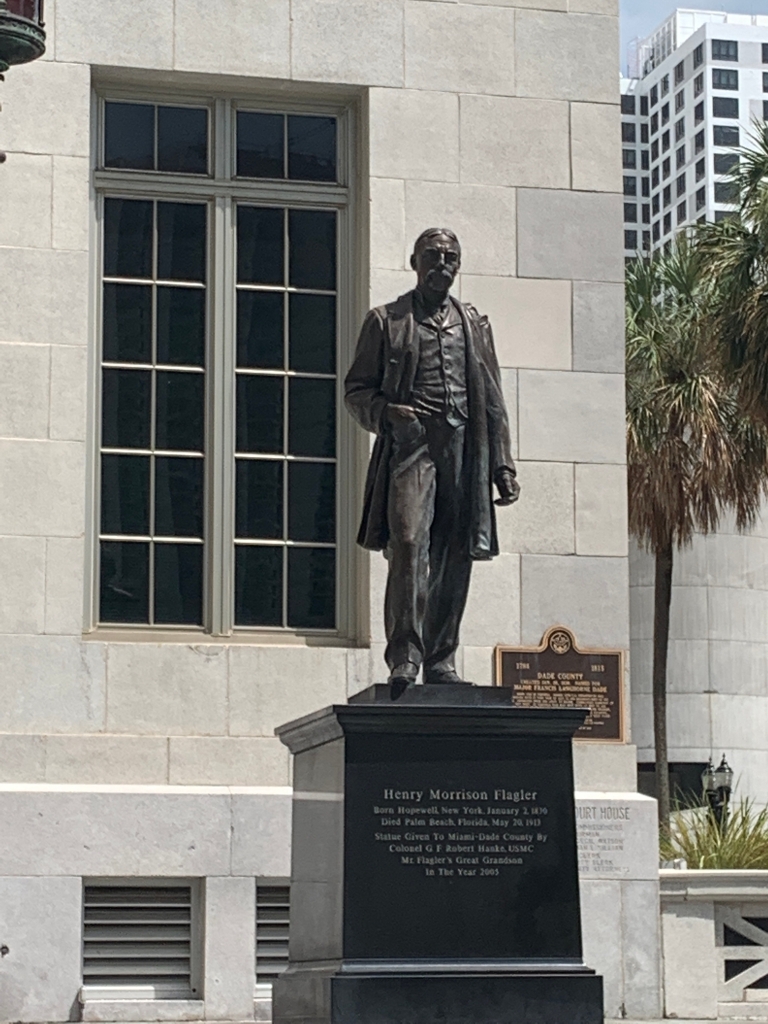
A big statue was constructed right in front of the courthouse to commemorate a man who historically built the railroad to make Miami a part the country. This man has done a lot for Miami, perhaps this city wouldn’t be what we know it as today without him, but he also brought quite a bit of segregation to the city. He was the creator of what we know as over town, an impoverished community, predominantly black that faces oppression and isolation from the rest of the city in part because of this man. He created this neighborhood to separate the African Americans in the community, so more white people would feel comfortable coming down. Putting a big hurdle on the diversity of the city, or at least how visitors perceived it.
With the times changing, this social oppression of minorities slowed down a bit. In the future generations, Miami became an even more diverse city as Cubans would flee the crisis going on in their home country and inhabited Miami. This city has become a hub for many south and central Americans who fled their countries in search of freedom and prosperity. However, equality and diversity are two different things, and unless every community feels empowered to prosper in a city, they will not work to further expand this diversity.
The rollercoaster of deep contemplation I was taken on during this trip was a very impactful one, we finished the trip in the history Miami museum, that further explained typically Miami instances, like the boats of migrants from Cuba or typical instances that were happening all around d the country, at the time being like an old train cart, that only allowed the colored people to ride in the back. I concluded that all of this diversity vs no diversity was a matter of individuals. It all depends on the individuals that live and lead the city. But it also is important for us to realize this gift and charm that this city has and work hard to support the minorities that need our support to grow and further diversify our Miami. The imagine of Miami is different in everyone’s eyes, mine was completely different back in Poland, but it also changed the more acquainted I got with the city, this trip around downtown changed it once again. I can only imagine that people from different parts of the city or different time periods in the city’s history perceive it, but I for sure want to learn at least a bit about their points of views.

Overtown as Text
Going Through Changes
By Martyna Kwiatkowska at Overtown Miami, September 15th 2021
September 15th we took a trip to Historic Overtown, located just North of Downtown. After catching the metro a bit late, I realized just how far this area was from where I lived. I’ve actually never visited Overtown before this excursion, however I heard many, mostly negative things about it. Since the beginning of this course, I was hoping to be surprised and that’s exactly what I experienced during this excursion.
I never thought of Miami as a city with a rich history, since it is relatively new, compared to the places I’ve visited and lived in. However my obsession with nostalgia and history was entertained, when we visited the old churches in Overtown and Hialeah Park. The Lyric theatre was the first place that left me in awe, learning that many famous soul and jazz singers performed there since the beginning of the 20th century was a big surprise, since I had always thought of Mami as almost uninhabited before the 30’s, 40’s when A/C was invented. The next two stops we made were Greater Bethel and Mt. Sinai Church, both of which were established the same year as the city of Miami was charted. The people working at the churches were very knowledgeable about the history of the establishments, and even mentioned their personal encounters with people that I’ve only ever read in history text books like Martin Luther KIng Jr. They both also described their personal experiences with Overtown and how the area has changed since their childhoods, they say the place that they called home transformed within the last 50 years, from a thriving African American community to a newly developed and gentrified one.


Bethel Church (left) and Lyric Theatre (right) by Martyna Kwiatkowska/ cc by 4.o
We also made a stop at Jackson Soul Food, a vital part of the community, trying Soul Food and catfish for the first time, which made the whole experience even more immersive. The people of Overtown were all very welcoming and were happy to share their history with all of us wherever we went. They also shared their frustration, with being pushed away by developers from their neighborhood.


Hialeah Park by Martyna Kwiatkowska/ cc by 4.0
Later on we took the metro even further to Hialeah station, by Hialeah Park and once again I was amazed. I’ve actually never heard of the place before and seeing the beautiful neo mediterranean architecture and such a grand building reminded me of Europe. I enjoyed finding out about the rich history of the place, from when the building and race track was built, all the famous guests that have visited it and also the fact that the Flamingo, a sure symbol of Miami, was created from the many flamingos living inside of the track. I was saddened a bit by the fact that Hialeah Park does not have any more horse racing, and it’s far from it’s days of glory, but I was glad that the owners still keep it up and have plans for further development of the land.
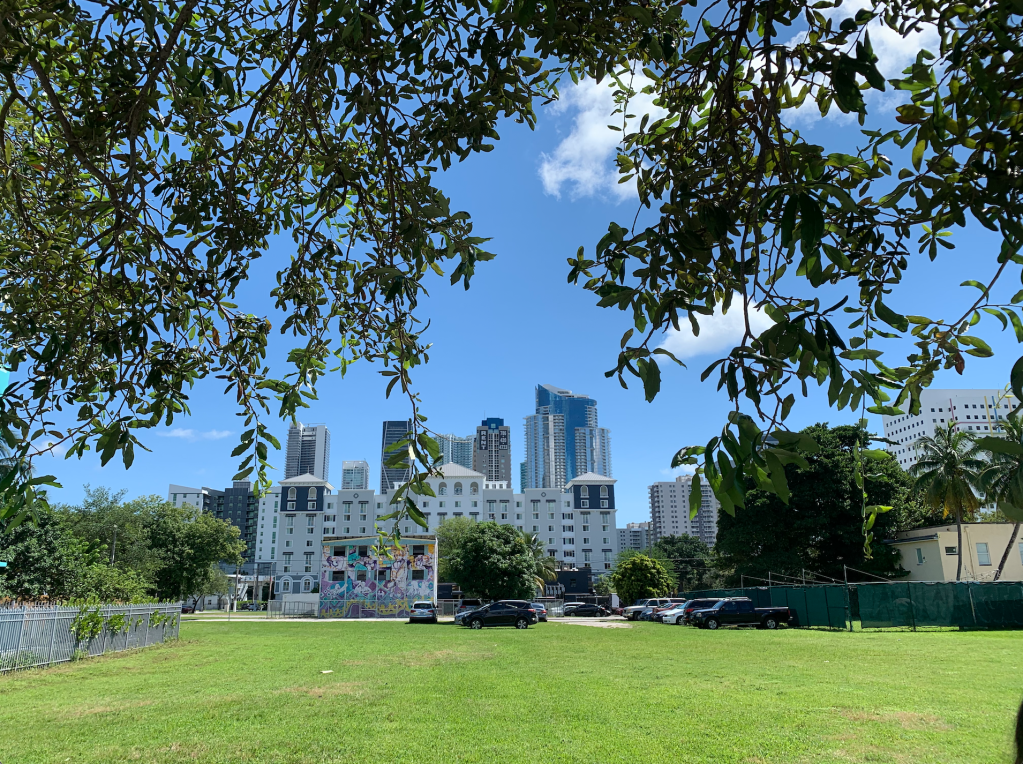
During this trip, I realized that Miami is full of history, but the huge focus on development and progress of the city can overshadow and destroy it’s historic places. There are few history museums in the city and soon enough, these churches of Overtown or the Lyric Theatre might fade away in history as the people that care about these places slowly die out. Progress and improvement have always been very vital parts of Miami culture, from the huge plastic surgery market that allows people to improve their physical traits to the constant development and construction of new buildings and highways. And dozens of communities, hundreds of landmarks and most importantly thousands of people were affected by this constant focus and change. It is important to protect national landmarks and communities, especially the underprivileged like Overtown, just like the owners of Hialeah Park are trying to do. I believe the legislature should push for more funding for preservation, instead of development, since a city with more landmarks attracts more tourists and makes its citizens feel more connected to the culture and history and fight for injustice that many communities have had to and are enduring.
Vizcaya as Text

Artificial Beauty
by Martyna Kwiatkowska at Vizcaya on October 13th, 2021.
Our excursion to Vizcaya occurred on a very sunny and hot morning. We were immersed into the world of James Deering from the moment we met at the entrance to the property. We soon found out that the entrance that we took was actually the back entrance, which used to be just a dirt road through the tropics, the important guest were usually greeted at the much fancier entrance from Biscayne Bay by boat. The entrance, the villa and even the gardens are all built in the style of Italian Renaissance and Baroque villas that James Deering visited on his voyages to the Old Continent. However, the construction of Vizcaya began in 1914 and ended in 1916, decades after the renaissance. This simple fact, led my mind to consider that everything I was going to see was not as dated as it seemed to be.


Vizcaya from the garden (left), Vizcaya from the back entrance (right) by Martyna Kwiatkowska/ CC by 4.0
Vizcaya is often seen as one of the most historical places in Miami, and due to young nature of the metropolis, it is in fact one of the oldest structures standing in Miami to this day. James Deering hired Paul Chalfin and Diego Suarez and F. Burall Hoffmann to design and build the summer home and the gardens. The beauty of the property is undeniable. Hundreds of people take wedding and quinceañera pictures in the beautiful grottos and detailed, man – made and maintained gardens. Each of the rooms is decorated in a different style, some examples include the French and the Rococo rooms. Both contained the principle elements of the old styles. However, upon closer observation of the rooms, there’s some sort of inconsistency. There is lots of random pieces of art that seem out place. When building in a style that is dated and, but it only seems respectful to be educate oneself on the historical meaning and value of the many objects that make up the villa. An example of this is busts of Roman Cesars that are not labeled and they just serve a decorative purpose. Other items include a Spanish rug, that was created for a catholic leader by Muslim artists that were granted asylum in exchange for continuous work in Spain after the Muslims were expelled from the nation. The piece of work that clearly shows James Deering’s lack of respect for cultural value was a historical painting of the Virgin Mary that was cut in half and served as a cover for organ pipes which appearance the millionaire was not fond of.


Organ with cut painting of Virgin Mary (left) and old Spanish rug (right) by Martyna Kwiatkowska/ CC by 4.0
It is clear that James Deering tried imitating an educated world – traveler, however failed to do so, when he utilized his money to purchase items that were valuable without potentially knowing why. After long contemplation, I realized the beauty was artificial, because that’s all that the creator of Vizcaya was concerned with. Although the building was beautiful, it was built in the land of the Tequesta, by Bahamian workers of Coconut Grove with no concern for their cultures. Deering was known to be mostly concerned with the finer things in life, like hosting lavish parties and enjoying the money his family had accumulated to the fullest. There were many nods to this throughout the mansion, including a beautiful pool, a statue of Backus (the Roman God of wine and pleasure) at the entrance and many lavish dining sets.



Backus (left), Vizcaya French garden (middle) and Vizcaya from the water (right) by Martyna Kwiatkowska/ CC by 4.0
This approach reminded me of Miami as a city, constantly focused on change and improvement with no consideration for history. James Deering purchased art, marble and even fountains from Europe, stripping them of their historical and cultural importance, just because he enjoyed the aesthetics. Miami is a city which is not built with nature in mind. From the layout of the city, to the insufficient conservation of nature like the everglades through constant westward expansion, living an organic life is quite difficult. Although artificial beauty is still beauty, it will never touch the hearts of observers like real beauty can.
South Beach as Text

Backyard Paradise
by Martyna Kwiatkowska at South Beach on November 3rd, 2021
When people picture Florida, they see beautiful sand beaches, palm trees, art deco and a year – round dream vacation spot. Miami Beach hosts over 3 million tourists annually, and around 40,000 people live on Miami’s barrier island. However, what we see now is not what the Spanish saw when they first arrived. A barrier island is one that provides protection from the ocean currents and winds, Miami Beach’s mangroves did just that, until they were all cut down to make space for its current infrastructure. Carl Fisher was the visionary behind the Beach’s current appearance. When he arrived in Miami in the 1920’s, he thought of it as the perfect vacation spot for him and his millionaire friends from the Northeast. And although Miami Beach, or Ocean Beach (since that was the name it previously had) was already a weekend spot of reunion for the culturally diverse community of Miami, Carl Fisher saw more potential for development. Unfortunately, he did not believe that his friends and other wealthy Americans would visit the island if it was inhabited by people of color, and he continued Flagler’s segregation policies on Miami Beach. Black Miamians were unfortunately not allowed to relax on Miami Beach like they had for years before and they were pushed to Virginia Key, which had the only “colored” beach in the city at that time.


The Breakwater (left) and Along Lincoln Road (right) by Martyna Kwiatkowska/ CC by 4.0
The trend of creating artificial beauty was continued in Miami Beach, as it started with the Deering brothers, that built residences with no consideration for the natural and historical landscape of Miami. This trend also led to a creation of an particular architectural style: Art Deco. As we ventured around South Beach, we walked past buildings of different pastel colors, from pinks and light yellows to blues. Most of these buildings followed the rules of Art Deco, including the rule of threes, that made sure that the building’s façade had 3 distinct parts, three windows and a maximum of 3 stories. Art Deco buildings were inspired by the futuristic appearance of home appliances and spaceships. Miami Beach has an impressive collection of these homes, and due to their unique appearances, they are famous worldwide and a accumulate millions of dollars in revenue from tourism. This protects them from destruction and acquisition by developers.

The constant development and focus on progress in Miami can surely be seen on the beach, however due to unfortunate position of the island below sea level, with the constant sea level rising, the billions of dollars spent on investment in multi – story skyscrapers will potentially be lost. However, for the time being, Miami Beach will surely remain one of the most visited places in the United States.
Deering Estate as Text

A Connection to the Past
by Martyna Kwiatkowska at Deering Estate on November 10th, 2021
I’ve been familiar with Deering Estate since 8th grade when I first moved here from Poland. It was very close to my middle school and was the endpoint of the first 5k run that I completed, a place where I trained my cat how to walk on a leash and a place of refuge when life would get too hectic. There has always been something that kept making me come back to the dock. However, I wasn’t aware of the secrets that the woods in the estate were hiding. I would have never thought that a place that I felt familiar with was the location of an active archeological site and a vital part of Tequesta culture and lifestyle.


Biscayne Bay from the “People’s Dock” (January 18th, 2019) (left) and Masha on a morning walk at Deering Estate (March 16th, 2019( (right) by Martyna Kwiatkowska/ CC by 4.0
Deering Estate derives its name from Charles Deering, a wealthy American that purchased the land and the Richmond Cottage (that was a hotel previously) for a winter home. However just like his brother James, that built Vizcaya, Charles was inspired by European architecture and culture. He took painting classes in Europe and was educated in art. The Richmond cottage, a wooden house, therefore, was not a safe space to store and display his art, so the millionaire built a renaissance revival home out of concrete. Deering made sure to hide a wine cellar below the home, which was locked with safe doors during prohibition. The land owned by Deering was almost untouched and surely, the millionaire was not aware of all the secrets that mangroves were hiding.
A 15-minute walk from Deering’s estate, a group of teenagers found a solution hole, that soon became a vital archeological site that helped us understand our geographical ancestors. Archeologists found remains of Paleo – Indians and various extinct animals at the site that date back to 10,000 years ago. The experience of going through a narrow path through Florida nature and standing at the site of a burial ground of people from thousands of years before my time, made me somehow feel connected with the now extinct tribe.
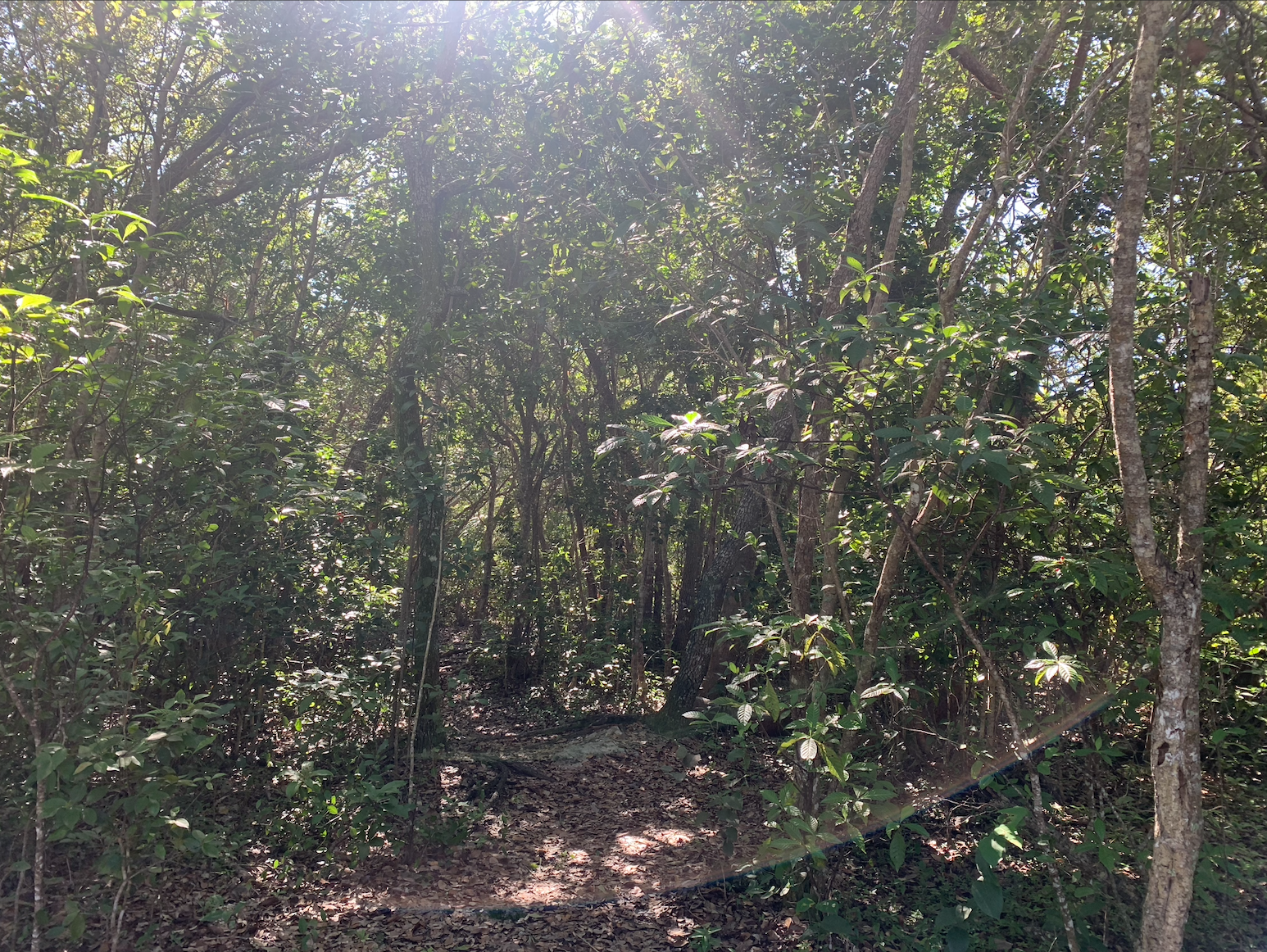

Hardwood Hammock Forest (left) and the Miami Rock Ridge (right) by Martyna Kwiatkowska/ CC by 4.0
On the opposite side of the residence, we walked along the Miami Rock Ridge, which was a pathway 33ft above sea level that allowed the Tequesta to travel by foot along the shore. We were walking in the tribe’s footsteps, until we reached a creek, a dump site. The Native Americans used shells in many various forms as their tools, due to their durability, to this day, they remain one of the only things left behind by the extinct tribe. The Miami Rock Ridge further led us to a burial mound of the Tequesta. It is believed that around 18 people were buried under shells and sand that formed a mound. However, unfortunately the tribe had become extinct with very little documentation about their rituals, lifestyle, and traditions. We can only imagine how life looked like for the Tequesta from the tools that they used and the remains that have been recovered.



“A Fresh Water Walk” (left), Mangrove Shore (center), Ridges in a tree (right) by Martyna Kwiatkowska/ CC by 4.0
Deering Estate is one of the few places that lets us see how Florida was before the modern industrialization. The public areas like the People’s Dock and the estate itself remain important locations for tourists and locals alike. However, the real beauty is behind the fences, where 7 different natural habitats meet, the only left remains of two extinct tribes are found and endangered mangroves serve as a sanctuary for fish hatchlings and crashed planes alike.
Rubell Museum as Text

A First Look at Contemporary
by Martyna Kwiatkowska at Rubell Musum on November 24th, 2021
Contemporary Art has never been anything I knew how to enjoy and even understand. My perception of this art style was quite uneducated, and I believed that anyone could make a random piece of “Art”, call it contemporary art, put a price on it and sell it for millions of dollars. My view changed drastically after experiencing the art at the Rubell Museum. Words that really stuck to me where the ones of Professor Bailly: “Contemporary Art reflects contemporary issues”. This shifted my approach towards this art style and opened my mind to enjoying its nonconventional aspects.


The Rubell Family Collection is in the Allapatah neighborhood and the building’s modern and kept up exterior, does not quite fit in within the impoverished community. The entrance to the gift shop leads patrons through a hidden garden of sorts and an upscale restaurant is located at the end of the short path. We were warmly greeted by the ticket clerks and as we entered the museum, we were exposed to the first artwork Narcissus Garden by a Japanese artist Yayoi Kusama. The 700 stainless steel balls show us our reflection and pave paths into different exhibition rooms. Later, on our tour, we also had the pleasure of experiencing two “Infinity Rooms” that the artist is known worldwide for. We experienced the rooms individually and the 30 seconds we each had allotted in the room, might seem like not that much but it was more than enough time to be completely immersed in the art. Both the art works used light and reflection to create art an environment which the patrons conceived they were part of.
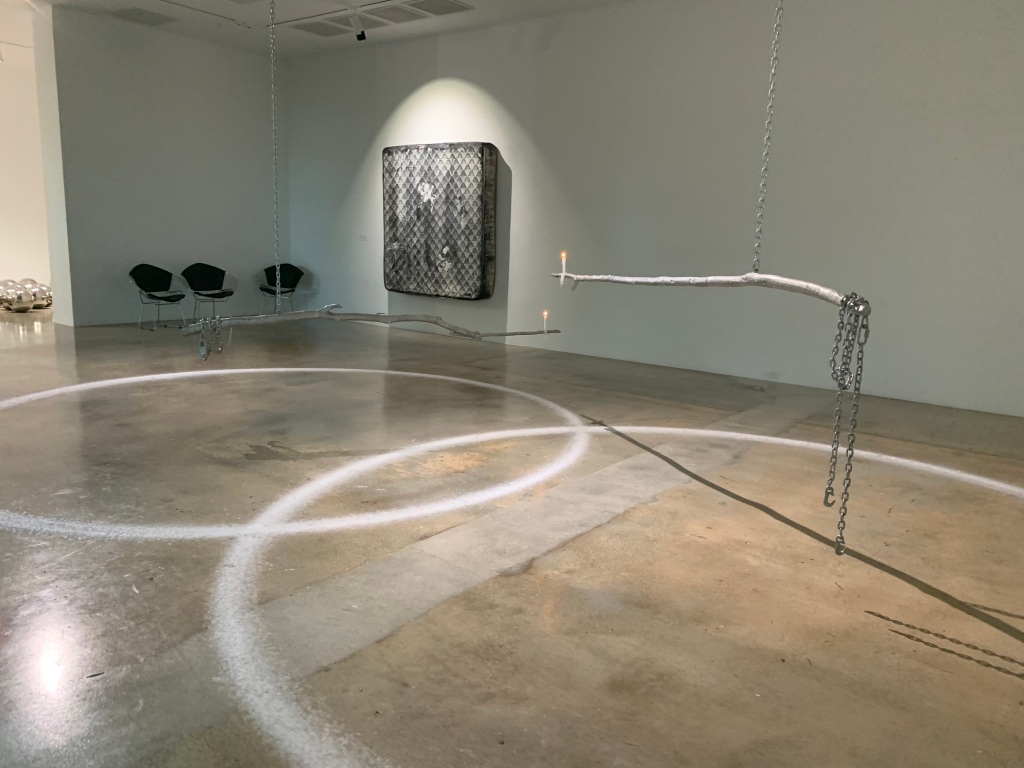
The Rubell Family started collecting art that they were passionate about 54 years ago and were visionaries of what art would look like in the 21sth century. They built many connections with artists that have now become world renowned before they were acknowledged for their works. In 1993 however, they wanted to share their collection and opened a museum in Wynwood. In a city that has been known for its constant chaos and reinvention, it was only suitable for Contemporary Art to thrive, since although the Deering brothers tried to implement it, renaissance artwork never belonged. Just like the Rubells, the gallerists of Art Basel in Switzerland saw Miami as a perfect place for this type of artwork to thrive in and brought the festival over to the city in 2002. Between the family opening the museum and Art Basel becoming a big part of the culture, Miami became a place where Contemporary Art thrives, and Miami Art Week brings in millions of tourists each year.

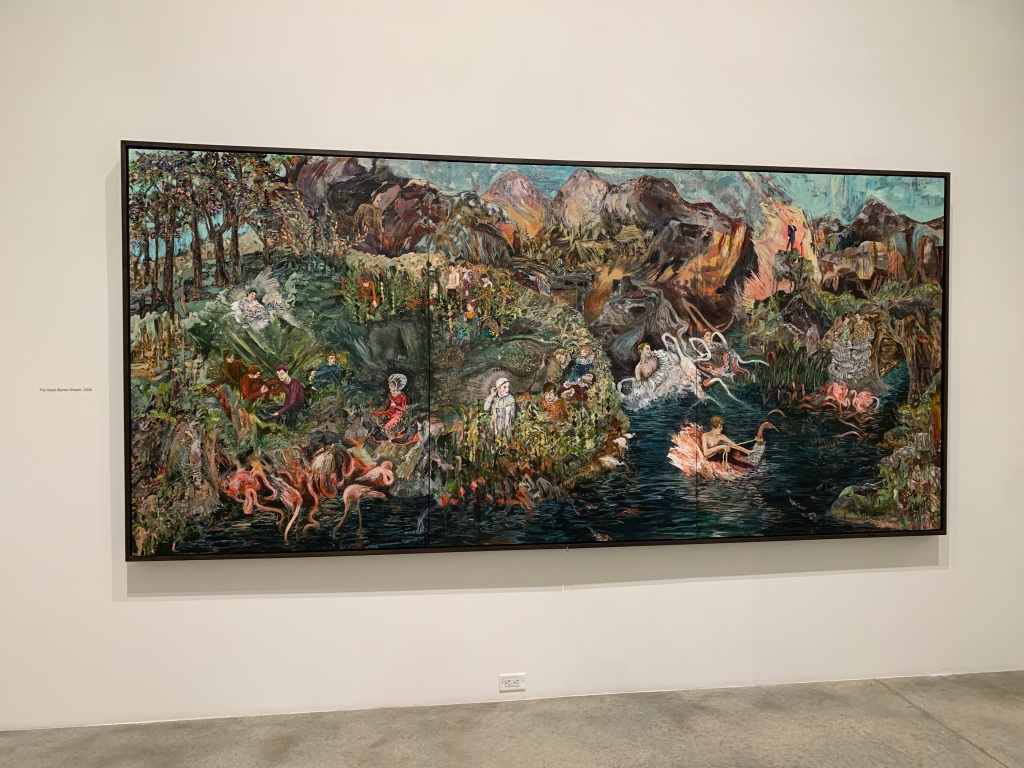
I hope to continue discovering the beauty in Modern Art in the future, what I admire about the seemingly simple and disorganized artwork is the meaning that each part of it has. I could spend hours looking at one piece of artwork and interpret its infinite meanings. Some artworks that really stood out to me were those of Cajsa von Zeipel, a Swedish artist that creates commentaries of modern humans and in her exhibition at the museum, she focused on influencers and the dark side of having an occupation that many people envy. The widespread and international aspect of contemporary art, allows it to speak to anyone and everyone will surely find an art piece they enjoy looking at and relate to.
Untitled as Text

An Art Fair
On one hot Wednesday afternoon, I found myself in the middle of Miami Beach, just a few days before Miami Art Week. After visiting the Rubell Museum the previous week, I had was excited to see what this show would have to offer. What I quickly realized is how little I knew about the industry of art itself and meeting many different gallery owners and artists, gave me an idea of how this enigmatic industry works.
The fair itself was in a big white tent in the middle of South Beach. It was quite surprising to me that thousands of dollars’ worth of art were stored right next to the water and sand. From my experience, art was usually kept in temperature-controlled museums made of sturdy concrete and protected by multiple security systems. Untitled did not look so from the outside, but on the inside, it resembled any other art museum or gallery I have ever seen. But considering how unexpected contemporary art can be, the location of the fair was quite fitting.


From the moment we stepped in we were immersed in the chaos and commotion of the event. The fair hosted over 145 international galleries, each booth had something different happening, my eyes had trouble focusing on just one piece of art. We had the pleasure of speaking to local and international gallery owners. One of the most impactful conversations that I recall was one with Gallery1957, based in Ghana and United Kingdom. The representative explained to us how she works to empower aspiring artists from an often-overlooked continent – Africa. She focuses her career on travelling to different countries across the continent and finding artists, who’s art she sells at international trade shows, including Untitled, where she sold all the pieces she was presenting. She also explained to us the prolonged process of sending artwork overseas and the costs associated with it. This made me realize the difficulty all the artists in the tent had to surpass and how much demand there must be for contemporary art. The fact that sellers pay so much money to sell the art means that they are comfortable enough in the trade that they are willing to take the risk.


A great benefit of visiting Untitled was also getting to hear the interpretations of the works through the artist’s perspectives. Contemporary art is known to be quite unconventional, and every person might interpret it in different ways. There is no proper way to understand what a piece means, since it is meant to inspire people in the ways that are meaningful to them. However, it is always a pleasure hearing the artist’s inspiration and interpretation of a wok, that they have thoughtfully created. A very impactful art collection we got to experience was the works of Arleene Correa Valencia, a Mexican born artist, who was inspired by her father’s love and sacrifice. Valencia created a set of portraits that represent the unconditional love immigrant parents have for their children and the extreme dedication and sacrifices they must make to provide a better future for their kids. The pieces were interactive, and they had many hidden meanings and ways to look at. The whole group was left in complete awe after experiencing the significant art that the artist presented.


Untitled Miami showed me yet another way to look at Contemporary Art and the business that is the art industry. It is full of novelty and chaos, but it is also filled with deeper meaning and understanding the struggles and experiences of people worldwide. I hope to see many other fairs, like Untitled soon, and perhaps attend Art Basel. The inspiration that flows through artists is nearly infinite and I hope to experience more of their greatness in the future.
Everglades as Text
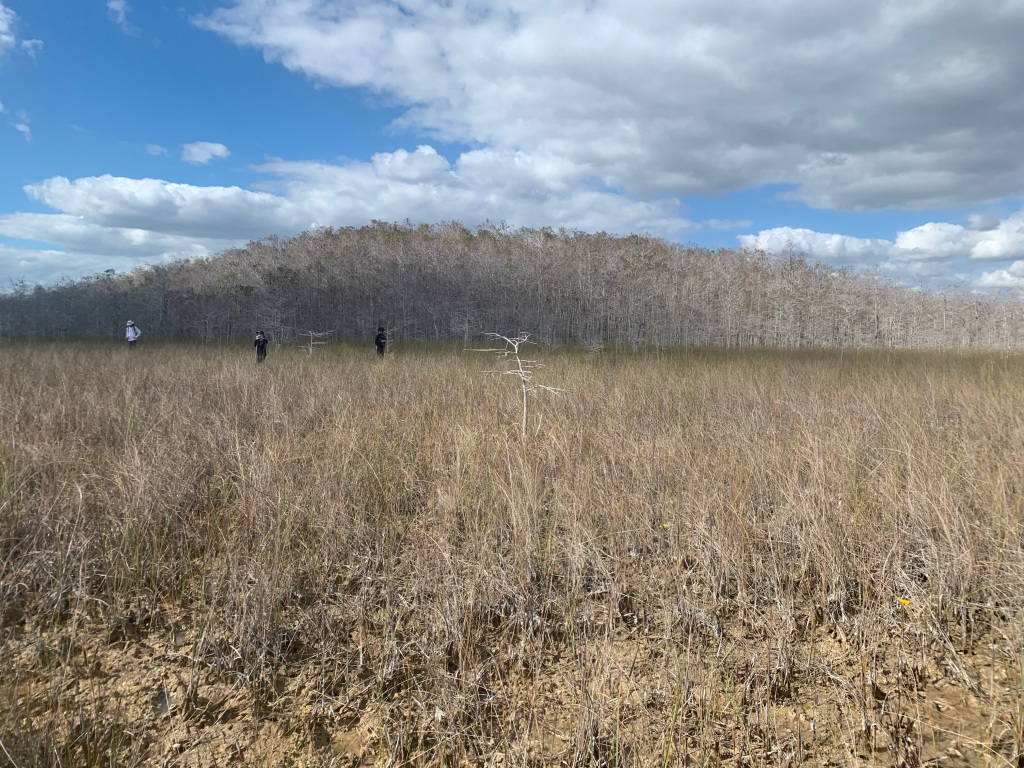
Our Backyard
By Martyna Kwiatkowska at Everglades National Park on January 19, 2022
This first class of the semester was one that I’ve been anticipating ever since I had read the class syllabus. However, a cold front hit around the time that the trip was scheduled so this anticipation was quickly combined with stress about the cold water that I was about to be almost submerged in. This stress brought back a core memory of mine about dealing with cold and reminded me of the magic of layers. The day before the excursion I prepared my outfit: water resistant leggings, water resistant hiking pants, an undershirt, a water and sun resistant long sleeve and a windbreaker with an extra warm layer. I felt ready to conquer this mission, and that is just what I did.
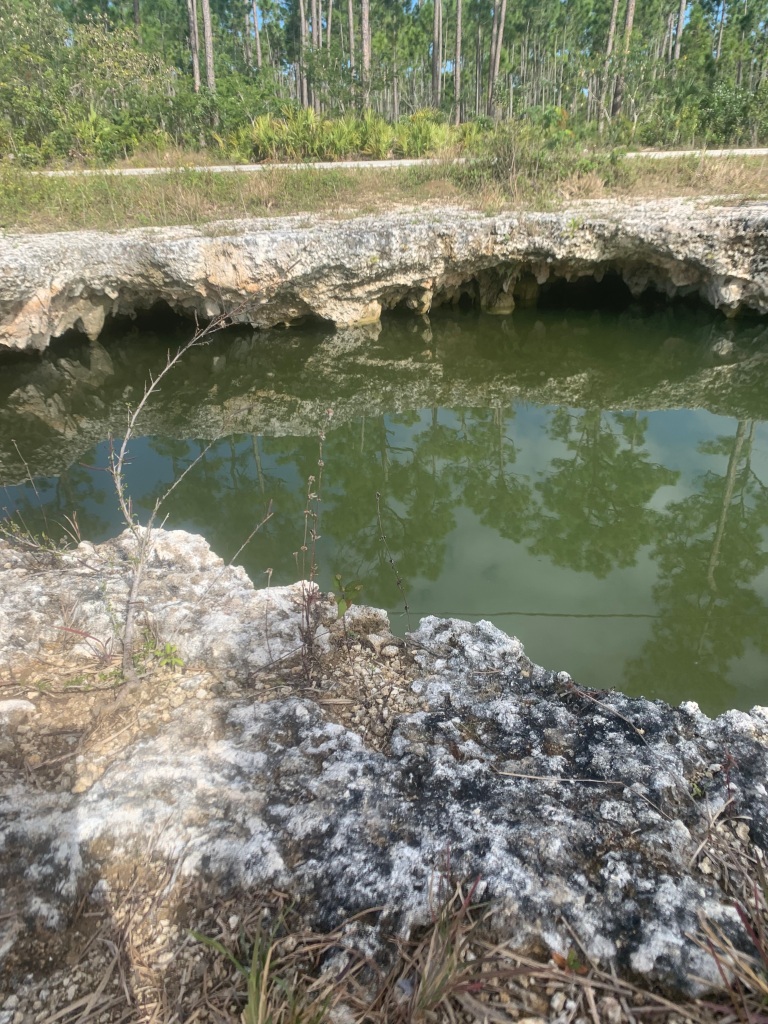

The morning started off chilly, however not as cold as I expected it to be. The drive to the Everglades, through Florida City was one I’ve done a multitude of times. When exiting off the highway, I felt like the city was behind me and I was encircled by farmlands. Not long after I was surrounded from both sides by greenery that is unique to the southernmost National Park in the Continental United States – the Everglades.
Miami is a very chaotic city. Constantly changing, improving, and growing. The Everglades felt like peace that I was longing for. Only a few yards away from the main street going through the park, there was almost complete silence and for once in a very long time I heard the whistling of the wind as it moved through the long grass. I could also feel the water under my feet as I was stepping on the moist and soft ground. The feeling was like walking on sponges and beneath my feet that is just what I saw. Seagrass that resembles sponges in appearance and are “water filters” of the Everglades. As we got deeper into the “Alligator Hole”, the more unsettled yet more relaxed I was. It was quite a spiritual experience.
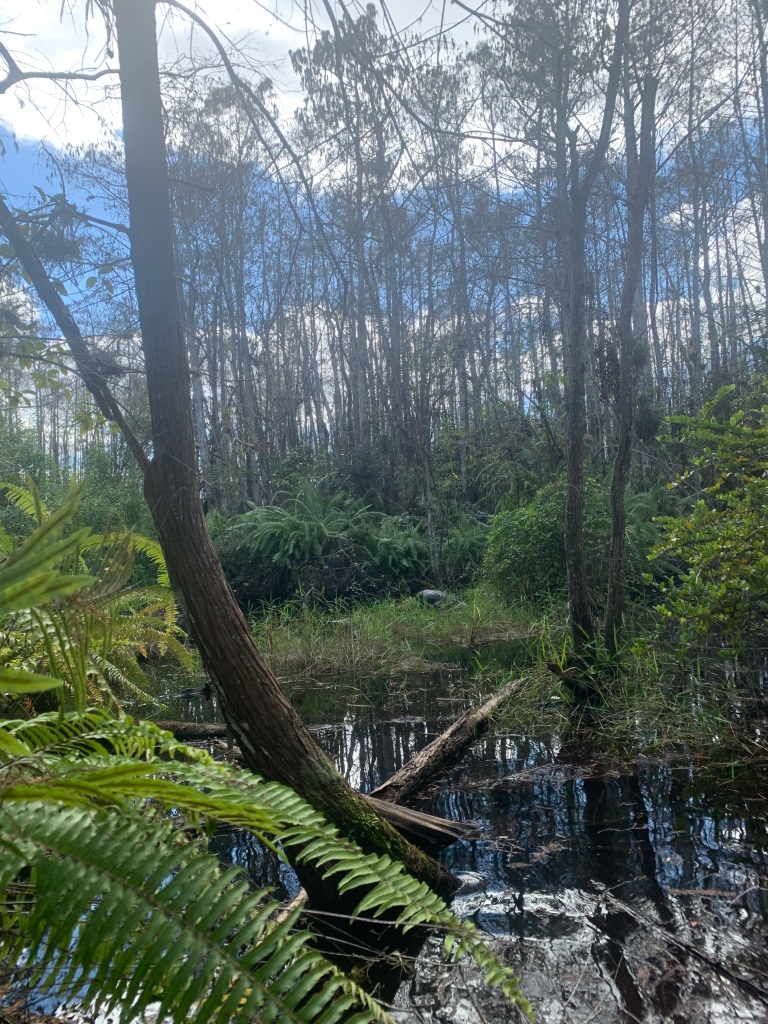

I had always wanted to stray off the beaten path. When going to the forest when I was a child, it was something that I was never allowed to do. My mom always called me back, stating the irrationality of such an action and the possibilities of getting hurt or lost. It felt like a sort of guilty pleasure, that for once not only was I allowed to do, but this behavior was also encouraged and normalized. I was confused about the whole situation, since in a way I felt serene, but my brain kept creating scenarios in which I was getting attacked by a snake or the alligator we got to see up close swam up to us and attacked one of the students. However, none of this happened and my inner fight between and adventurous child and cautious adult ended as we passed the biggest danger in the Everglades, the speeding cars on the main road.
Spirituality, especially in relation to nature around me has always been a big aspect of my life. I’ve always believed in the healing powers of spending time with nature and being in tune with the natural rhythms of life. I believe that not many people in Miami have experienced these powers or have spent enough time in nature. The city’s resident’s and government’s focus has always been expansion, and for the past 150 years, that is just what we did. There are constantly new building plans drawn up for the remaining parts of the Everglades. However, with the hard work of environmentalists and the National Parks, we continue to have an area merely an hour out of the city, that can serve as a retreat and relaxation for thousands, while still providing a sense of loneliness and isolation that cannot be found in other parts of South Florida. It is important to keep this area safe for all current and future residents of South Florida who benefit from the fresh water supply, nature, and water drainage system that the Everglades gives.
Coral Gables as Text

The City Beautiful
by Martyna Kwiatkowska at Coral Gables on February 2nd, 2022
Coral Gables is one of the most iconic and historic neighborhoods in Greater Miami Area. To many tourists and locals, the city is associated with prestigious restaurants and shops, renaissance revival buildings, expensive properties. Coral Gables will always have a special place in my heart since I attended high school there. I recall trips to the “Mile” on the free trolleys and browsing through the stores at Merrick Park after school. Our trip to the city brought back many of those memories. However, even during my 3 years of high school, I never felt like a part of the lavish community of Coral Gables, I was an outsider enjoying the city like any other person. I also lacked awareness of the history of the city, it’s founder and the dark parts of this glorified community.


The city was incorporated in 1925, just a few years after the building of Vizcaya and Deering Estate. George Merrick moved to Miami from Pennsylvania during his teenage years, his parents bought a large amount of land in the mostly undeveloped area of Coral Gables. He inherited the land in the 1920’s after his father’s passing and began the construction of one of the first planned communities in the nation. There were many strict building laws that remain in the city limits. Merrick envisioned the city to look like a Mediterranean city, or at least what he believed looked like it. He had spent many days in both Mexico and Cuba, and his inspiration was derived from more Spanish colonial buildings and Vizcaya. However, the fascination with Europe of rich Americans at the time led the city’s architecture to be known for resembling European cities.
The main road of the Gables is Coral Way, which is named Miracle Mile between LeJeune Road and Douglas Road. It serves as a shopping and restaurant strip. On both sides, the road is surrounded by short, two story, limestone and coral buildings. At the LeJeune crossing of the road, stands the city hall of Coral Gables, with George Merrick’s statue right in front. The founder was glorified for many years and sold acres of land to developers from the north and helped shape the beautiful city we know today. However, in 1937, Merrick publicly debuted his plan to relocate blacks into Overtown and take over communities that they’ve been calling home for decades. On top of that scandal, with the Great Depression, many of Merrick’s developers lost money on the deals that they made, leading the founder to financial and social ruin. The University of Miami, which was partially funded by Merrick took down his name on the list of honorees. The statue remained and George Merrick to this day looks down the Miracle Mile. There has been quite a bit of controversy about Merrick, and many people have tried to overlook Merrick’s actions from history books and remove his name as one of the founders of UM. However, it is crucial for future generations to understand who the city they live and appreciate was built by and acknowledge its founder’s faults.




The City of Coral Gables will always remain an important place in my life, and I will surely find myself visiting its many restaurants in the future. However, I am very glad I got to experience the lesser-known parts of its history and image. I hope that more people will acknowledge the past and see past the value of their million – dollar properties. The Gables really does live up to its name of the “City Beautiful” and the experience of visiting Miami, staying at the Biltmore, and cruising down the “Mile” I can imagine is quite an impressive one. It’s important to appreciate tourists that keep our South Florida economy going, but educate people about faults and plans for improvement, instead of hiding the history.